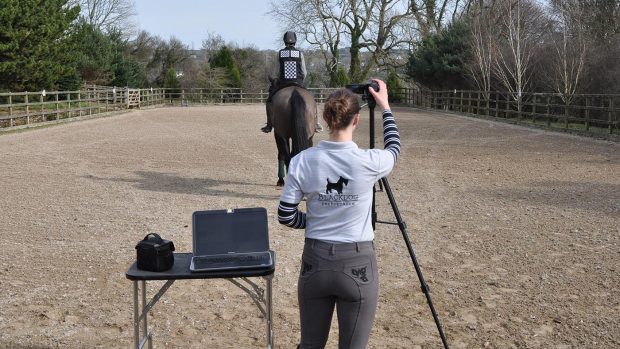There is often a fine line between horses who simply have an inherent, slightly “odd” gait (in front or behind) and those who are lame — albeit subtly.
Interest in gait patterns has increased markedly as their relevance to long-term soundness and performance becomes clearer. It is a challenge to decide what is normal when buying a horse. Techniques for evaluating limb movement are becoming ever more sophisticated. The latest computerised technology can now illustrate the subtle variations in movement between individual animals — and even between individual limbs of the same animal — which may not always be obvious to the average observer.
These studies have shown time and again that there is a “grey area” encompassing those situations where an individual gait pattern may, or may not, indicate a problem. Interpretation of hindleg movement can be especially difficult because a problem is often “bilateral” (it affects both hindlimbs equally), thus balancing out and eliminating overt lameness.
In addition, there are several well-recognised variations on hindlimb flight that appear “normal” in certain breeds, or in horses with particular types of conformation. However, in others they indicate a source of pain and should be considered a true lameness.
“Plaiting” — in which the horse swings each hindleg round the other before placing it on the ground ahead of, or to the outside of, the opposite foot — is one example. In horses with severe “base narrow” conformation (the lower hindlegs are closer together) this appears to be their standard way of moving. In other animals it has been traced to hock, sacro-iliac or even suspensory ligament problems.
Another example is where the hindlimb is swung forward outside the expected line of limb flight, eventually landing relatively near the expected spot. This “travelling wide behind” can be an indication of upper hindlimb pain in some horses — but in trotters it represents their normal pattern.
While there are many situations where an odd or unusual hindlimb gait should be considered a true lameness, there are also a number of conditions where a limb flight abnormality results from a musculoskeletal structural problem. These cases are often referred to as “mechanical lamenesses” because the affected limb simply cannot physically bend properly. The horses are not usually in any pain, and many continue to perform right up to expectation throughout their lives. Others physically cannot, especially if the gait abnormality becomes profound, even though they are in no discomfort.
There are other examples of odd or unusual hindlimb gait patterns, plus additional possible “mechanical lamenesses”. Many are secondary to a problem elsewhere in the body, such as in the back, or to a general illness that has various knock-on consequences, such as tetanus.
While it is tempting to dismiss a slightly bizarre gait pattern as “just the way he’s always gone”, there could be a source of pain somewhere — or it could represent a very subtle form of a mechanical lameness. Either way, veterinary advice should be sought to give treatment the greatest chance of success.
For more information about abnormal gaits visit the veterinary advice section of the new HHO horse care archive



